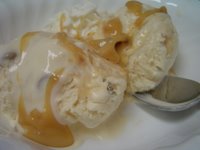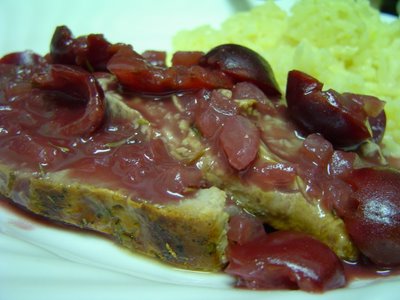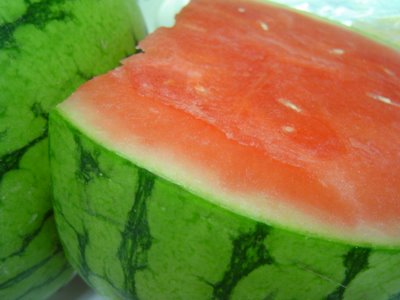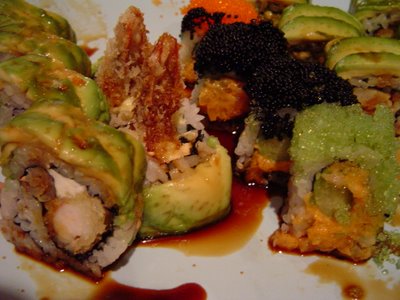I Cuss, You Cuss, We All Cuss . . .
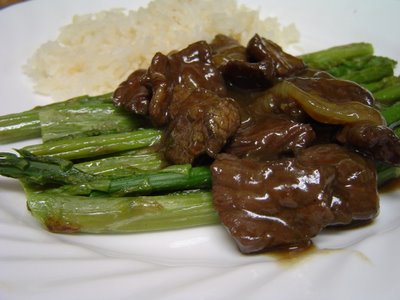 for asparagus!
for asparagus!That quotation's from an old far side cartoon, about marketing ploys that for some reason didn't become popular. (it makes me laugh every time.) And despite all the work the lab's done with asparagus, it's still a popular vegetable with me.
I prefer roasting the asparagus rather than stir-frying it, and it eliminates the step of chopping it. I'm pretty happy with the marinade overall - it certainly did the job of tenderizing some long-ago-frozen cubes of beef. I'm not too keen on the color though (was it the red wine instead of rice wine? powdered ginger? bad karma?); it ended up some sort of weird grey when I mixed it all together. Dump it all in anyways - the final sauce, while not the tempered brown of Chinese takeout or the shiny dark brown of the oyster sauce itself, comes out fine. You should also not taste the marinade to correct for seasoning once you've put in the baking soda, because it will taste awful . . . not that I did that or anything.
ASPARAGUS BEEF WITH OYSTER SAUCE
adapted from Simple Chinese Recipes
for the marinade
1 lb top round beef cubes
1 tsp baking soda
2 tsp sugar
~ 1/4 tsp each powdered ginger and garlic powder
4 tsp sesame oil
3 Tbsp light soy sauce
5 Tbsp red wine
2 tsp cornstarch mixed with 1 Tbsp cold water
for the asparagus
12 oz. fresh or frozen asparagus spears
a tsp or so sesame oil
for the sauce
1-2 Tbsp sesame oil
1 smallish onion, sliced
2-3 Tbsp oyster sauce
2-3 Tbsp chicken broth
1 tsp cornstarch mixed with 1 1/2 tsp cold water
Cut the beef cubes in thin slices. In a shallow dish, whisk together all marinade ingredients well to combine. Add the beef slices and toss to coat. Cover and refrigerate for a minimum of two hours, three if you can swing it.
Later: Heat 1 Tbsp sesame oil in a nonstick skillet. Add the onion and let cook, stirring occasionally and making sure it doesn't brown too much, about seven to ten minutes.
Meanwhile, preheat the oven to 400 F. While the oven is preheating, toss the asparagus with the sesame oil and place on a baking tray. Place the tray in the heated oven and let roast for ten minutes.
Back to the skillet: Add the additional Tbsp sesame oil if it's low. Drain the beef slices and add to the skillet. Stir-fry beef for a minute or two. Add the oyster sauce and chicken broth, stir well, and bring to a boil. Let cook for about two minutes. Mix the cornstarch and the water together well and pour into the sauce. Stir well. Let boil until the sauce thickens but is not too viscous or clumpy, about one minute.
Serve the beef and sauce over the asparagus spears.



